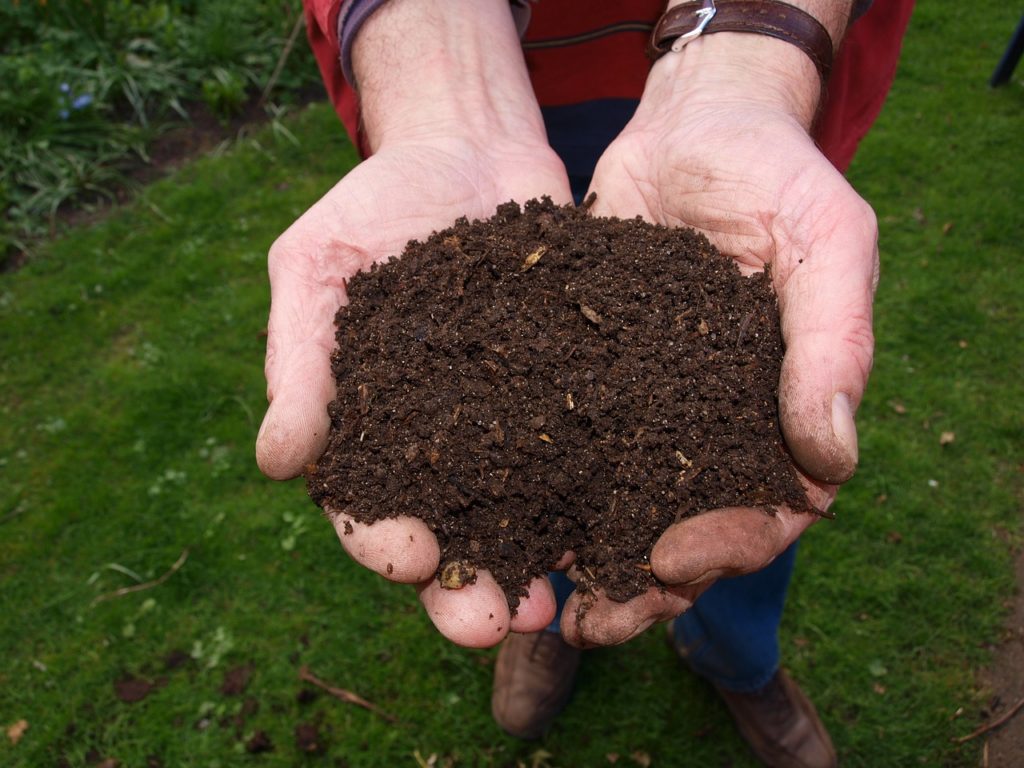soil biology 101
Although the life under the ground is typically out of sight, it definitely should not be out of mind! Especially since 95% of life on land is found under your feet.
it's all about the microbes
By measuring the number and variety of microbial populations present in soil, we can understand which groups are lacking. Then we can reintroduce the proper microbes to create a healthier, flourishing soil ecosystem in tune with how our Creator designed: A complex, sustainable system using plants to convert light energy and minerals mined by soil microorganisms into chemical energy. This energy, in the form of carbon-rich compounds, then feeds all organisms, both above- and below-ground as well as aquatic life.
Here are some of the important microscopic organisms needed to work together for have healthy soil:

Bacteria
Most aerobic soil bacteria are decomposers. Their job is to break down and consume various nutrients from minerals and dead organic matter. They convert these nutrients, including carbon and nitrogen, into stable energy forms. When bacteria become food for higher organisms, these nutrients become useful to plants and other organisms.
Bacteria are critical in the soil ecosystem for the role they play in helping cycle nutrients — especially nitrogen — throughout the soil. Although these single-celled creatures are the smallest in size, they play a large role in nutrient cycling. Also, bacteria produce sticky, glue-like substances (glomalin) that bind soil particles together. These microaggregates are key in forming soil structure. This soil particle network improves water-infiltration and prevents soil erosion.
Moreover, like probiotics in our gut, beneficial bacteria play an important role in preventing diseases. By eating, competing, and/or inhibiting harmful disease agents, they keep the bad guys in check.
Beneficial fungi
Fungi are aerobic organisms and often grow in long strands called hyphae. These hypha (plural) work their way between soil particles, rocks, and plant roots and build soil structure by their hyphal network. Like bacteria, some fungi are also decomposers.
Another type of fungi– known as mycorrhizal fungi– create helpful direct relationships with plants. These fungi provide a type of extended root network to the plants in exchange for nutritious secretions (exudates) by the plant’s roots.
Both types of fungi benefit the soil in several ways.:
- Fungal hypha form large soil aggregates which help hold soil in place and allow water to infiltrate.
- By secreting organic acids and enzymes, fungi are able to extract large quantities of carbon and other nutrients from minerals and organic matter.
- Fungi retain large amounts of carbon in long-term storage compounds under the ground. As a result, fungi are an effective means of drawing down carbon levels in the atmosphere.
- Like bacteria, fungi also help the soil by increasing nutrient and water cycling, water-holding properties, and preventing disease.
Protozoa
Acting as the recycling system in the soil, protozoa consist of three groups: flagellates, amoebae, and ciliates. These single-celled organisms mainly feed on bacteria.
Protozoa then excrete plant-available nitrogen and other nutrients into the soil for plants’ roots to absorb. As a result, they are crucial components in the soil food web. When protozoa are not in adequate numbers in the soil or compost, nutrient cycling throughout the soil cannot happen.
Flagellates and amoeboe need aerobic soil conditions to live. This means soil oxygen levels greater than 6 parts per million (ppm). These good guys release ammonium nitrogen that allow plants to flourish while discouraging weeds.
In soils starved for oxygen (anaerobic conditions), ciliates prevail. They produce nitrate forms of nitrogen which favors unhealthy plants, weeds, and diseases.
Nematodes
These non-segmented worms are quite large in comparison to other organisms, such as protozoa and bacteria. Nematodes are able to function at several levels within the food web and fall into five different categories.
Bacterial-feeders eat bacteria and fungal-feeders consume fungi. Predatory nematodes eat protozoa and all types of nematodes. Omnivores eat a variety of organisms. These beneficial nematodes live in aerobic conditions and are key in releasing plant-available nutrients. They are also important in distributing fungi and bacteria throughout the soil and roots and can also be food for higher level organisms. Thus, these organisms are a vital component in the soil web.
But the last category of nematodes– root feeders– thrive in anaerobic conditions. They are the nemesis of plant growers as they destroy plants’ root systems and can cause great harm to crops. This is another important reason for maintaining aerobic conditions within our soils.
Oomycetes
Oomycetes appear to be fungi because they are also filamentous in nature. But, they are not true fungi. Whereas fungi have a cell wall comprised of chitin, oomycetes’ cell wall is made up of cellulose.
Some oomycetes are saprophytic, meaning they decompose dead organic matter. But most of this group are serious pathogens. Many of the blights, Phytophthora, Pythium and downy mildew diseases are caused by oomycetes. These organisms are pervasive with anaerobic conditions. A good rule of thumb is that quantities of these organisms should be less than 25% of beneficial fungi.
Actinobacteria
These are long, slender, filamentous organisms were formerly classified as fungi. They used to be known as actinomycetes. However, these organisms have now been re-classified into the bacteria family. Actinobacteria are facultative anaerobes which means they grow under reduced oxygen environments.
Although brassica crops prefer a high concentration actinobacteria, a concentration greater than 16 ug/g of soil indicates anaerobic soil conditions. Such conditions are poorly tolerated by other plants and beneficial fungi. In fact, actinobacteria biomass numbers higher than this threshold inhibit mycorrhizal fungi.
Microarthropods
These microscopic insects are higher up on the food chain and feed on fungi, nematodes and protozoa. As a result, these tiny multi-cellular organisms are also important nutrient cyclers. They eat lower microorganisms and release plant-available, soluble nutrients.
“We know more about the movement of celestial bodies than about the soil underfoot.”
Leonardo da Vinci

Let's Build Our Soil and Renew Our Environment
Signup to receive updates and receive 25% off your initial order. We hate SPAM as much as you do and will never sell your information to anyone!
Thank you!
You have successfully joined our subscriber list.
